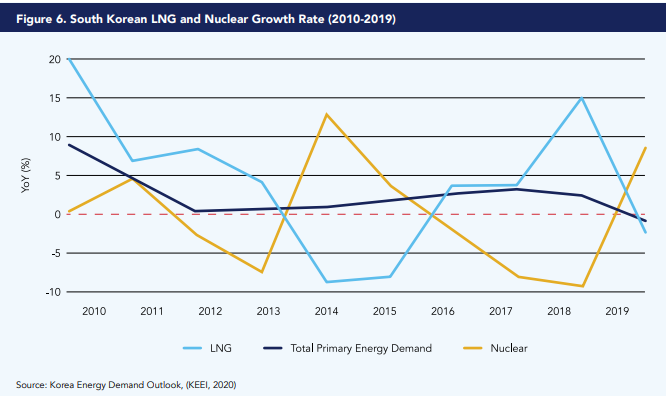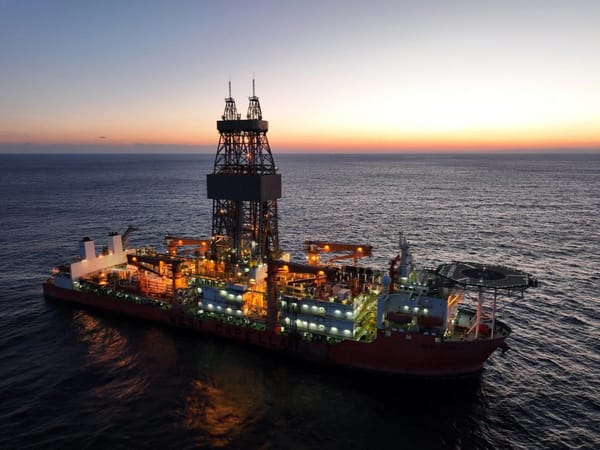Credit: Public domain.
Below is an op-ed contribution by the Korea Economic Institute in Washington DC. Through its publications and public events, KEI advances understanding of the Korean Peninsula for policy-makers and the American public. Sign up here to keep up to date on KEI's upcoming events.
President Moon Jae-in 문재인 entered office in 2017 with a promise to increase the country’s reliance on renewable energy. This was a response to both the detrimental effects of worsening air pollution and public anxiety around nuclear power following the 2011 Fukushima nuclear accident. To meet domestic industries’ high demand for energy, Seoul chose to increase consumption of the more-expensive but cleaner liquefied natural gas (LNG). However, researchers Francesca Frassineti and Francesco Sassi concluded that current market dynamics will not allow the country to phase out its consumption of fossil fuels and transition to a carbon neutral economy, and more financial and regulatory support are needed for renewable energy to have a viable future in South Korea.
The high cost of LNG is at the heart of the problem. After the energy providers purchase the requisite amount of LNG, they have limited resources to more aggressively invest in cleaner, renewable sources like solar and wind energy. Making this situation worse is the long-term contracts for gas imports, which Korea Gas Corporation (KOGAS) negotiated when global energy prices were higher. Moreover, the government subsidies for renewables like biofuels have encouraged power plants to burn this carbon-emitting resource at thermal coal plants. Both of these dynamics crowd out clean and renewable energy. As a consequence, the cost of generating electricity from solar and wind remains higher in South Korea than in other industrialized economies. It is therefore no surprise that renewable energy contributes a smaller share of South Korea’s total electricity generation than in other OECD countries.

The financial burden of importing LNG incentivized public utilities to continue their reliance on coal, moving Korea further away from the goal of improving its air quality. Although the government transitioned 24 aging coal-fire plants to gas-burning operations, the high cost of importing LNG encourages public utilities to maintain thermal power plants that use cheap imported coal and biofuels. As a result, Korea’s coal consumption has not substantially decreased despite the high cost of purchasing gas. This is evident in the data which shows that increased consumption of LNG only substituted for the decrease in electricity generated by nuclear power, rather than eating into the share of power produced with coal and biofuels. This key observation led Frassineti and Sassi to conclude that, due to market conditions, South Korea cannot more aggressively phase out coal unless public utilities receive more financial support for renewable energy resources from the government.

But LNG is not the sole bridge fuel that could help South Korea transition to a greener economy. Nuclear energy is more cost-effective than LNG and does not produce pollution that would negatively impact public health. The key hurdle is public anxiety around safety. While the accident at Fukushima contributed significantly to these concerns, a more significant source of the hostility toward nuclear energy might be the government’s failure to engage with civic groups. The lack of communication between technocrats and the public elicited disproportionate but understandable fears, particularly after the 2013 scandal around faked safety tests. If the government wants to truly embrace a greener economy, they must convey to the public that either more fiscal resources need be dedicated to subsidizing the transition of energy companies or return to nuclear power. And if the latter path is taken, Seoul must address local concerns in a more consistent manner.








